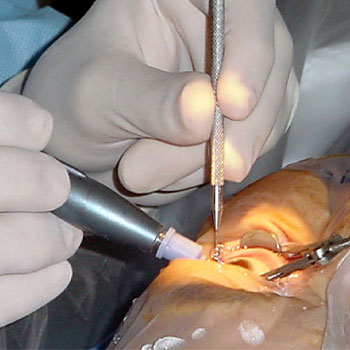Cataract surgery is one of the most commonly performed and highly successful eye procedures worldwide. It is a specialized surgical intervention designed to remove a cloudy lens (cataract) from the eye and replace it with an artificial intraocular lens (IOL) to restore clear vision. Cataracts typically develop as a result of aging but can also be caused by medical conditions, trauma, or genetic factors
What is Cataract Surgery?
Cataract surgery is an ophthalmic procedure aimed at restoring vision that has been impaired due to the clouding of the eye's natural lens. When a cataract forms, it prevents light from passing through the lens clearly, leading to blurry or dim vision. This surgery is the only effective treatment to eliminate cataracts and improve sight.
During the procedure, an ophthalmologist removes the affected lens and replaces it with an artificial intraocular lens (IOL). The surgery is highly effective, minimally invasive, and usually performed as an outpatient procedure with local anesthesia

What Are the Procedures for Cataract Surgery?
There are two primary techniques used in cataract surgery, both of which aim to restore clear vision by replacing the cloudy lens with an artificial one
Phacoemulsification (Phaco Surgery)
Phacoemulsification is the most common and advanced technique used for cataract removal. It involves the use of an ultrasonic device to break up the cataract into tiny fragments, which are then suctioned out through a small incision. The surgeon then inserts an intraocular lens (IOL) into the eye, which remains permanently in place. The procedure is quick, typically taking 15-30 minutes, and does not require stitches
Extracapsular Cataract Extraction (ECCE)
This technique is used in cases where the cataract is too dense for phacoemulsification. The surgeon makes a larger incision to remove the clouded lens in one piece before placing the IOL. Recovery may take longer compared to phacoemulsification due to the larger incision
Both techniques aim to restore clear vision, and the choice of procedure depends on the severity of the cataract and the patient's eye condition
Who Needs Cataract Surgery?
Cataract surgery is recommended for individuals who experience vision problems due to cataracts, impacting their daily activities. While cataracts are most common among older adults, people of all ages can develop them
Common Signs That Indicate the Need for Cataract Surgery
- Blurry or Clouded Vision: Objects appear hazy, making it difficult to see clearly
- Difficulty Reading or Driving: Trouble reading small print or seeing road signs, especially at night
- Sensitivity to Light: Increased discomfort from bright lights or glare
- Frequent Prescription Changes: The need for new glasses or contact lenses frequently due to vision fluctuations
- Faded Colors: Colors appear dull or yellowish instead of vibrant
- Double Vision in One Eye: Seeing multiple images of a single object in one eye
When cataracts start interfering with daily life, an ophthalmologist may recommend surgery as the best option for vision restoration
When to Seek Cataract Surgery?
Cataract surgery is not always immediately necessary when a cataract is diagnosed. Many people manage their condition with stronger glasses or better lighting in the early stages. However, when vision loss begins to impact daily tasks, such as reading, driving, or recognizing faces, it is time to consider surgery
Factors to Consider for Cataract Surgery Timing
- Daily Activity Limitations: If cataracts interfere with work, reading, or hobbies
- Difficulty Driving: If night vision is compromised, making driving unsafe
- Doctor's Recommendation: An eye specialist will assess the cataract’s severity and determine if surgery is necessary
Early intervention can prevent further complications and improve the quality of life, making cataract surgery an essential procedure for maintaining clear vision
Medex Hospitals – Best Cataract Surgery in Guntur
Medex Hospitals is renowned for providing high-quality cataract surgery in Guntur. With a team of experienced ophthalmologists, state-of-the-art surgical technology, and a patient-centric approach, the hospital is a trusted destination for cataract treatment
Why Choose Medex Hospitals for Cataract Surgery?
- Expert Ophthalmologists: Skilled eye specialists with years of experience in cataract surgery
- Advanced Surgical Facilities: Equipped with modern diagnostic and surgical tools for precise procedures
- Personalized Patient Care: Comprehensive eye evaluations and customized treatment plans
- High Success Rates: Proven track record of successful cataract surgeries with excellent patient outcomes
Patients seeking cataract surgery in Guntur can trust Medex Hospitals for a seamless experience, ensuring better vision and improved quality of life
Cataract surgery is a highly effective and safe procedure that restores vision for individuals affected by cloudy lenses. With advanced surgical techniques such as phacoemulsification and extracapsular extraction, patients can achieve clear vision with minimal discomfort. If vision impairment affects daily life, seeking timely consultation with an ophthalmologist is crucial. Medex Hospitals in Guntur stands as a leading choice for cataract surgery, offering expert care and cutting-edge treatment solutions
Facing eye problems? Call us today for expert care and clear vision solutions
Please Call @ 8499829999

